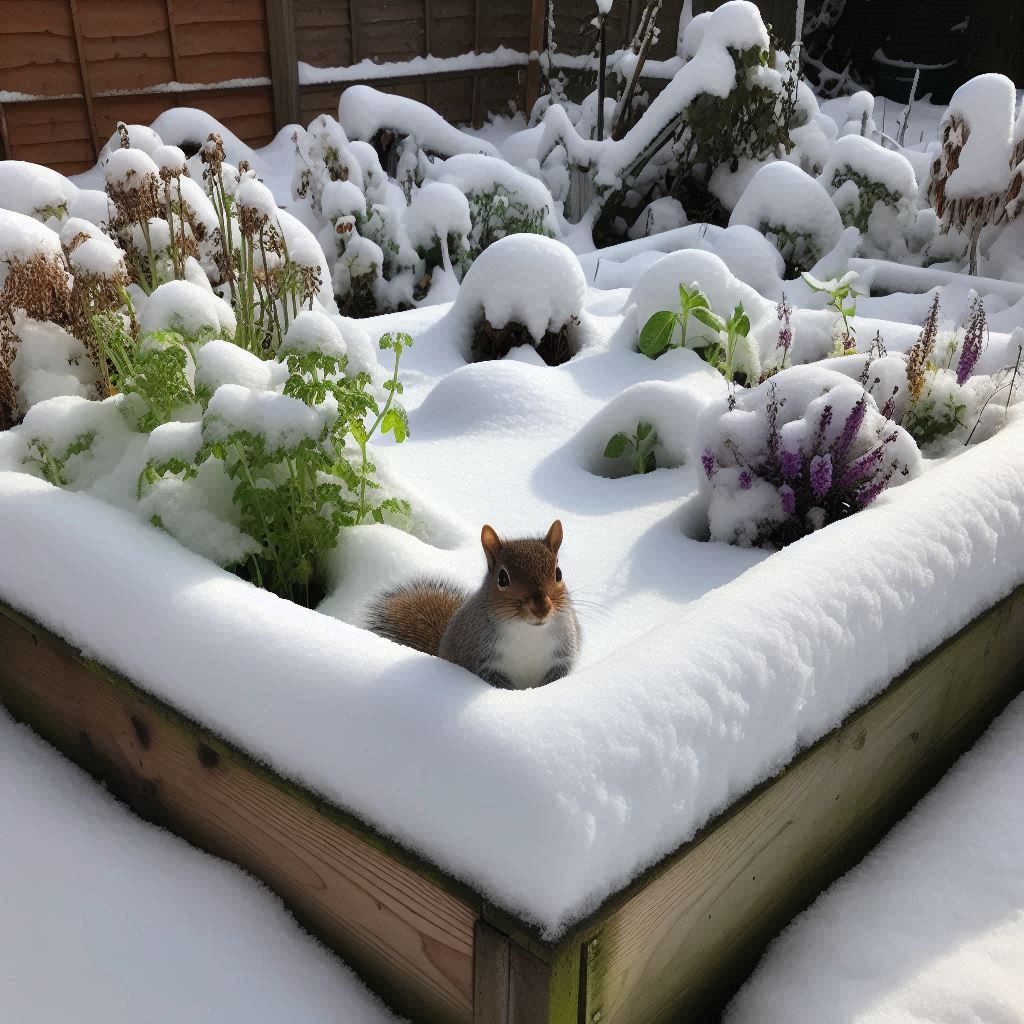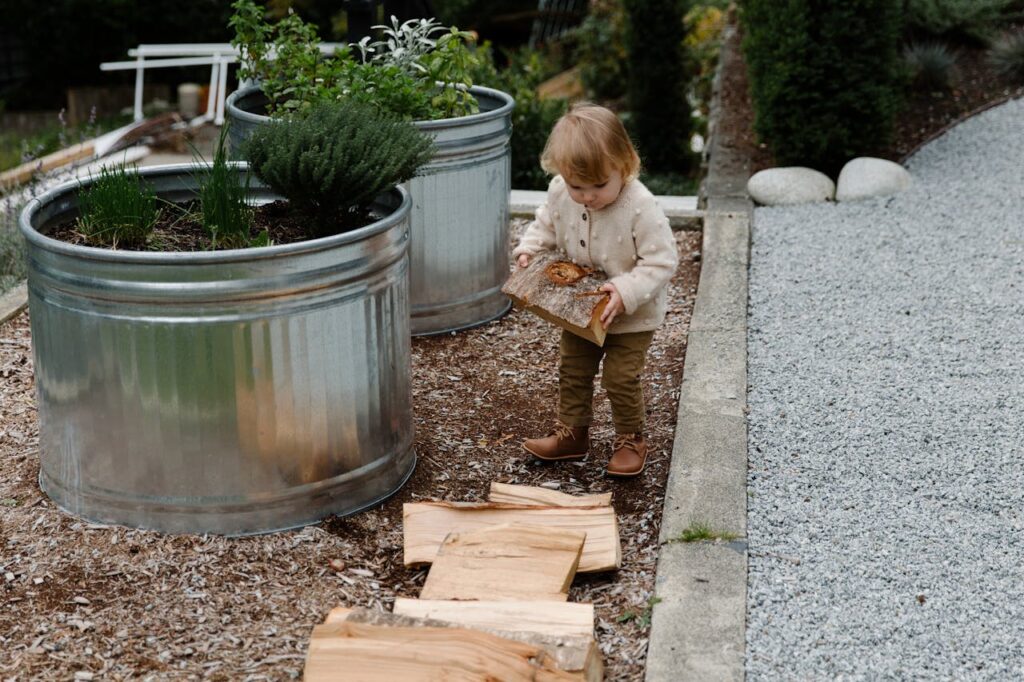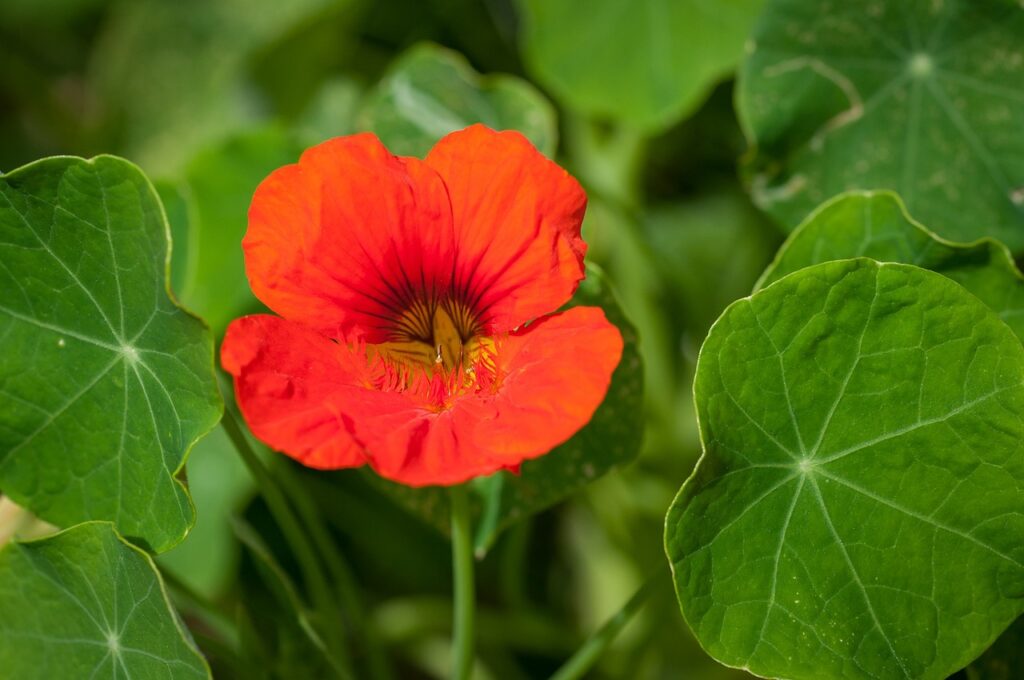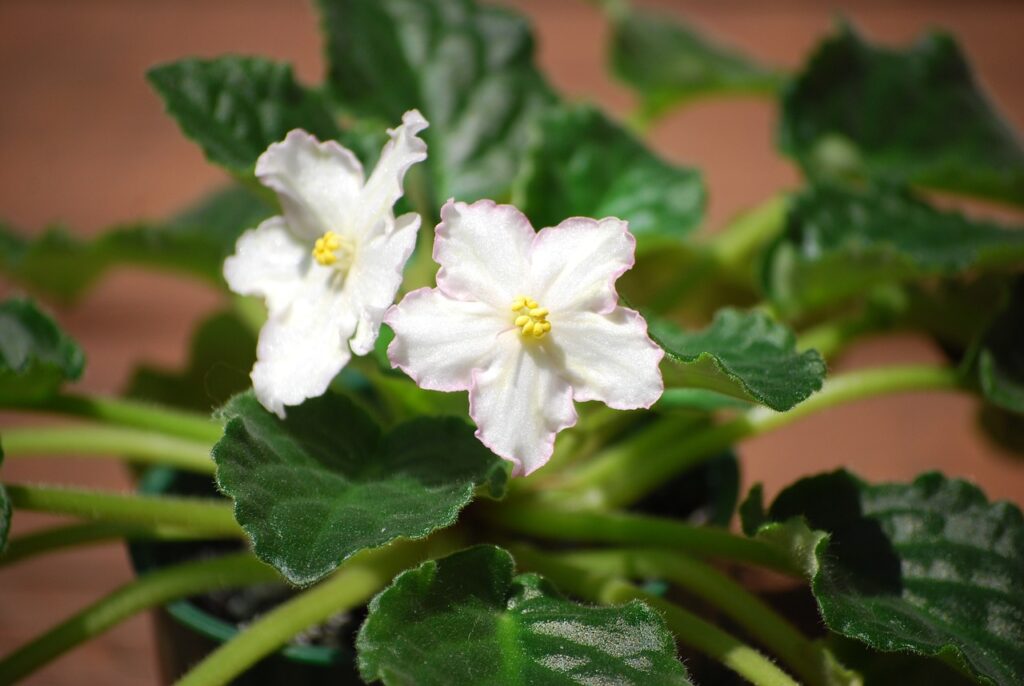Winter is fast approaching, and for gardeners, it’s time to think about how to protect their plants during the chilly season. Raised garden beds are not exempt the cold. In fact, they require more attention compared to other gardening methods because the soil in a raised bed can cool down faster than traditional beds. Winterizing raised garden beds will keep the soil healthy, prevent disease, and prepare for next year’s planting season. Here are the steps you need to follow to winterize your raised garden beds:
As an Amazon and ebay Affiliate we may earn a commission off any purchases made through our links. This won’t affect the price you pay.
Clean the Garden Beds
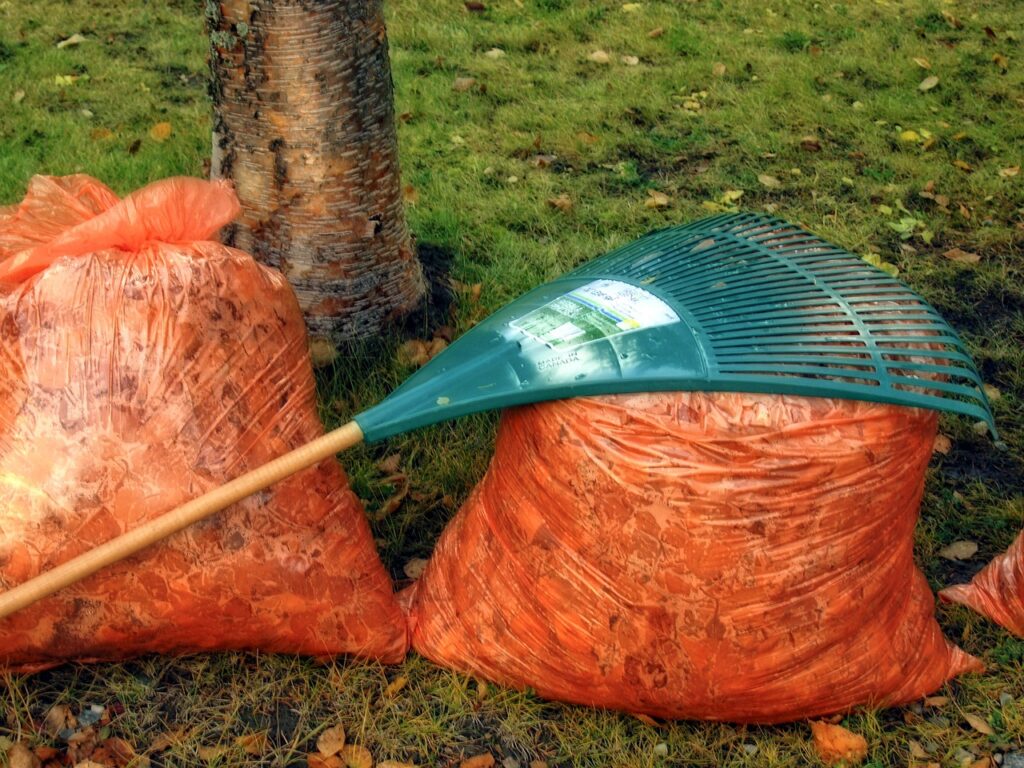
Before winter sets in, the first step is to clean your raised garden beds. Remove any dead plants or plant material, including weeds. If you have any diseased plants, destroy them and do not let them contaminate healthy plants. Cleaning your garden beds will prevent any disease or pests from overwintering or getting a head start in spring.
Add Organic Matter
Adding organic matter is an effective way to maintain soil health and keep it full of nutrients throughout the winter. Add at least a 2-inch layer of compost, shredded leaves, or well-rotted manure to your garden beds. Organic matter improves soil structure, promotes healthy root growth, and increases water holding capacity.
Cover the Garden Beds
Covering raised garden beds with a winter cover will keep the soil temperatures from dropping too low. The most cost-effective way to do this is by using materials on hand. You can use old blankets, burlap sacks or tarps to cover your garden beds. Using a winter cover will also prevent soil erosion and add an extra layer of protection to your plants.
Choose Winter-Ready Plants
Not all plants are tough enough to withstand the cold weather. Select winter-ready plants that can survive the winter. Kale, collards, and spinach are some options that can tolerate frost and snow. Be sure to research which plants are best suited for your climate zone.
USDA Hardiness Zones:
It is important to understand the USDA hardiness zones, which classify areas in the United States based on their average minimum winter temperatures. This classification system helps gardeners determine the suitability of various plants for their specific regions. Let’s take a peek at these zones and appreciate the wintery palette they offer:
Zone 2: Anchorage, Alaska.
Zone 3: Northern Maine, North Dakota.
Zone 4: Montana, Minnesota, and parts of New England.
Zone 5: Illinois, Pennsylvania, and parts of the Pacific Northwest.
Zone 6: Virginia, Missouri, and parts of the Midwest.
Zone 7: Northern Texas, Arkansas, and southern Kentucky.
Zone 8: Northern Florida, Georgia, and parts of California.
Zone 9: Central Florida and southern Texas.
Zone 10: Southern Florida and southernmost regions of the United States.
Now, let’s venture into the icy landscape and discover some remarkable snow and frost-hardy plants:
1. The Ironclad Fern (Polystichum acrostichoides):
If the North Pole were to have its own superhero, it would probably be the Ironclad Fern. This robust evergreen perennial thrives in Zone 3 and above, withstanding freezing temperatures like a champ. Its delicate, lacy fronds elegantly pierce through snow-covered landscapes, reminding us that even in the coldest of times, there is grace and resilience. Planting this fern in a shaded area with well-drained soil and providing occasional moisture will keep it looking its best.
2. Siberian Wallflower (Cheiranthus Allionii):
Do not let the name fool you; this vibrant perennial is not exclusive to Siberia. The Siberian Wallflower, hardy in Zones 3 to 8, boasts charming clusters of orange and yellow flowers that light up winter gardens. It thrives in full sun and well-drained soil, making it an ideal choice for rock gardens and borders. This wallflower’s resilience in the face of frost and snow is sure to brighten up your garden, turning heads and brightening moods.
3. Arctic Fire Dogwood (Cornus sericea “Farrow”):
Much like a dedicated postal worker, the Arctic Fire Dogwood stands tall and steadfast, delivering vibrant colors throughout winter. This ornamental shrub, hardy in Zones 2 to 7, showcases vibrant red stems against the winter’s white backdrop. It happily tolerates a wide array of soil types and loves full sun to partial shade. Prune it in early spring to encourage new growth and maintain its stunning display year after year.
4. Rocky Mountain Juniper (Juniperus scopulorum):
Imagine a silent guardian, stoically rooted amidst gusts of snowy winds. The Rocky Mountain Juniper exemplifies this image with its hardy nature, thriving in Zones 3 to 7. This evergreen conifer, resistant to the harshest of conditions, provides year-round greenery to your landscape. It prefers well-drained, rocky soil, much like those found on its native mountain slopes. Planting it in full sun allows it to spread its branches wide, expressing its resilience with a touch of majesty.
Some Edible Options
1. Kale
Kale is a green leafy vegetable that can survive even the harshest winter conditions. It’s easy to grow and packed with essential vitamins and minerals.
2. Collards
Collards are another cold-hardy vegetable that can withstand frost and snow. They’re rich in vitamins K, C, and A and are often used in Southern cooking.
3. Spinach
Spinach is an excellent source of nutrients and can be grown in raised garden beds year-round. It’s a leafy green that’s easy to grow and can tolerate freezing temperatures.
4. Garlic
Garlic is a cold-loving herb that thrives in cool weather and can be grown in raised beds. It’s a versatile ingredient and adds flavor to many dishes.
Tips for Caring for Cold, Snow, and Frost-Hardy Plants:
Now that we’ve explored a few resilient options for your wintery garden, let’s discuss how to care for these plants and ensure their survival:
1. Watering:
While winter may bring snow, it can also lead to dehydration in plants. Ensure your cold-hardy plants receive sufficient moisture during dry spells, particularly when the ground is not frozen. Water deeply at the base of the plants rather than sprinkling the foliage, helping their roots stay healthy and hydrated.
2. Mulching:
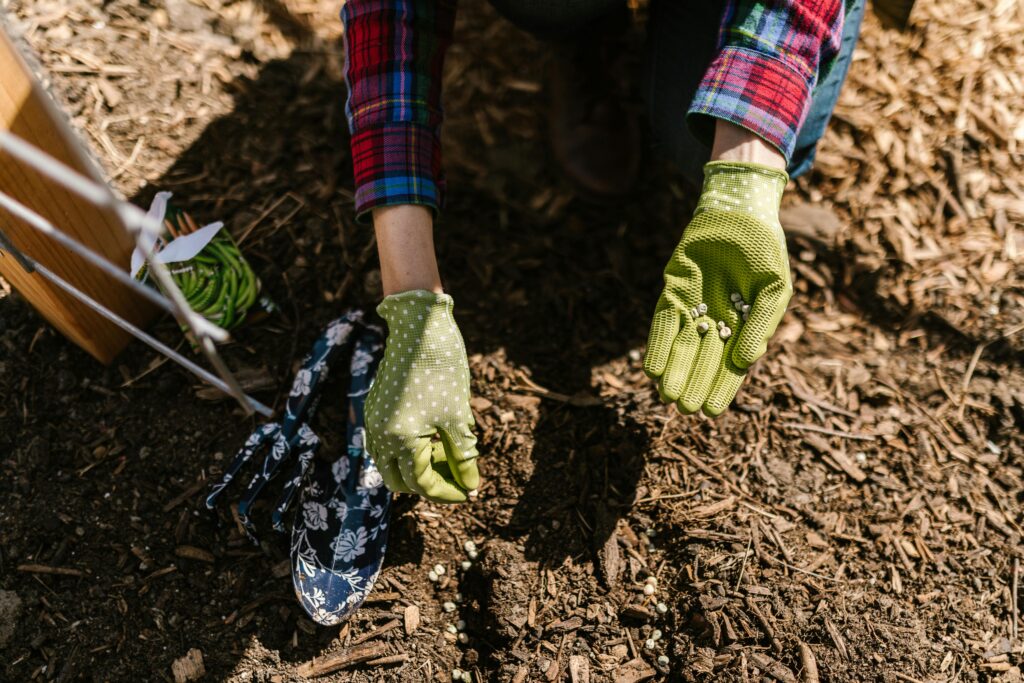
Protect your cold-hardy plants’ roots from harsh winter conditions by adding a layer of organic mulch, such as straw or wood chips, around their bases. Mulch acts as an insulating blanket, preventing extreme temperature fluctuations and preserving moisture levels.
3. Pruning:
To maintain the health and aesthetics of your cold-hardy plants, prune them during late winter or early spring. This timing encourages vigorous growth in the following seasons and keeps them in proper shape. Remember, be cautious not to overprune, as some plants may require their foliage for additional insulation against the cold.
4. Providing Wind Protection:
Shield your cold-hardy plants from strong winter winds by installing windbreaks or barriers, such as fences or hedges. These protective structures mitigate the risk of desiccation caused by wind, reducing stress on your plants.
Winter Cover Crops
Winter cover crops such as winter rye and annual ryegrass are an excellent way to protect your garden beds during the colder months. They help reduce soil erosion and improve soil fertility. When spring rolls around, the cover crop can be turned into the soil to improve soil health and add more nutrients.
Winterizing Vegetable Beds
Winterizing vegetable beds is similar to other raised garden beds. Add organic matter, remove any dead plants, and cover with a winter cover. However, for vegetable beds, you may also want to consider staking plants under the cover to help them endure the winter wind and weight of snow.
DIY Methods to Winterize Garden Beds
Using recycled and repurposed materials is an economical and environmentally-friendly way to protect your raised garden beds. You can use old window frames, plastic bins or old shower curtains to cover your garden beds. Be sure to secure the covers in place to withstand the winter weather conditions.
Time to Winterize Raised Beds
The perfect time to start winterizing your raised garden beds is a few weeks before the first frost. This will give you ample time to clean the garden beds, add organic matter, and cover them before the cold weather sets in. As spring approaches, remove winter covers and till the soil before planting.
Plant Supports and Staking Plants
Using plant supports and staking plants under a cover will help to protect them during the winter season. For example, you can use bamboo stakes or steel rods to hold up plastic covers. Staking plants also prevent them from being damaged by winter winds and weight of snow.
Covering Raised Beds in Winter: Cost-Effective Methods
When winterizing raised garden beds, covering them with a winter cover is essential. Here are some cost-effective methods of covering your garden beds during the winter:
Use Recycled Materials
Old blankets, shower curtains, and burlap sacks can be used to cover your raised garden beds. These materials are cost-effective and eco-friendly. You can also reuse other materials such as old window frames and roofing for a more permanent solution.
Purchase a Winter Cover
Many stores offer special covers designed for raised garden beds. These covers are made of durable materials and provide superior protection against harsh weather conditions. While they may be more expensive than homemade covers, they can last for years and provide better protection for your plants.
Use a Row Cover
Row covers are lightweight fabrics that provide protection against frost and snow. They are made of materials such as polypropylene and can be easily draped over the garden bed. Row covers allow sunlight, air, and moisture to pass through while protecting the plants from the cold.
Winter Cover Crops: Boosting Soil Fertility and Nutrient Retention
Winter cover crops are an important aspect of sustainable agriculture. They are grown during the off-season to protect and enrich the soil, prevent erosion, and suppress weed growth. These crops can be used to improve soil fertility and structure, making it easier for subsequent crops to grow. Winter cover crops are typically planted in the fall and allowed to grow until spring when they are either tilled into the soil or used as mulch.
There are a variety of winter cover crop options available to farmers and gardeners. Some common examples include winter wheat, rye, oats, clover, and radishes. Choosing the right cover crop depends on factors such as climate, soil type, and available resources. It is important to select a cover crop that will thrive in your specific environment.
Treating Your Soil Right, It Will Pay Dividends
One of the primary benefits of winter cover crops is soil protection. When crops are harvested or removed from the field, there is a risk of soil erosion. Winter cover crops help mitigate this risk by keeping the soil covered and intact. They also help to prevent nutrient leaching by absorbing excess nutrients that may have been left behind after the previous crop was harvested.
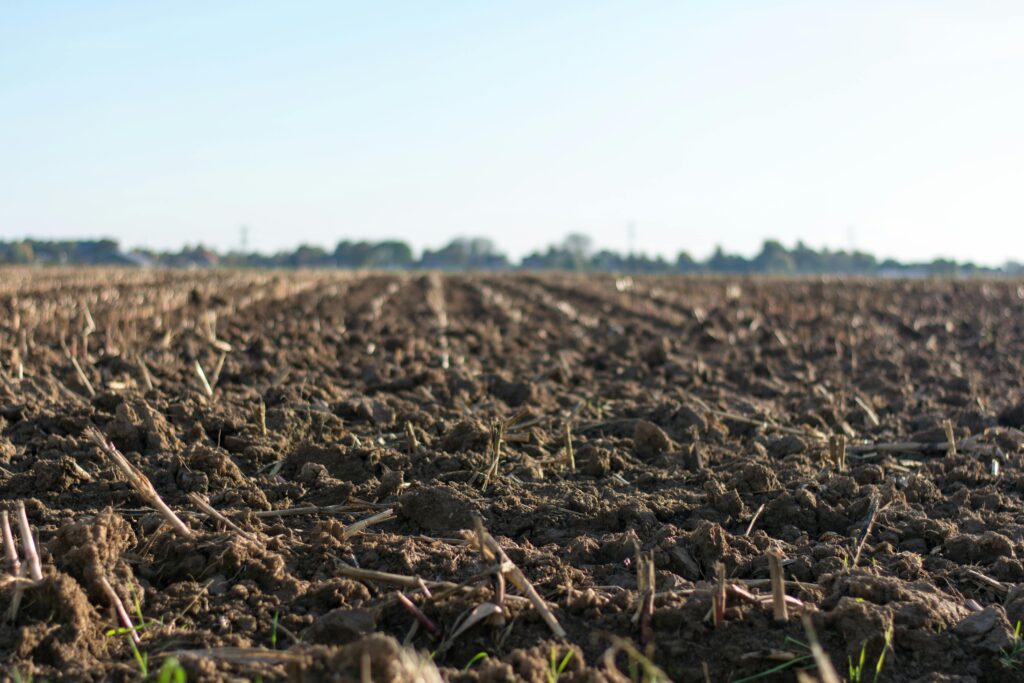
Cover crops are also important for improving soil fertility. They work by fixing nitrogen from the air into the soil, which can then be used by subsequent crops. This can help reduce the need for synthetic fertilizers and reduce the environmental impact of agriculture. Cover crops also add organic matter to the soil, which improves soil structure and water retention.
In addition to soil protection and fertility, winter cover crops can also help to suppress weeds. When the soil is covered with a thick layer of plant material, it becomes more difficult for weed seeds to germinate and establish. This reduces the need for herbicides and manual weed control, which can further reduce the environmental impact of agriculture.
Time Your Cover Crops
One of the most important things to keep in mind when planting winter cover crops is timing. Winter cover crops should be planted early enough in the fall to allow them to establish before the first frost. This ensures that they will be able to provide the maximum benefit to the soil. It is also important to consider the timing of subsequent crop plantings. For example, if you plan on planting corn in the spring, you may want to choose a cover crop that will be easy to terminate in time for corn planting.
You may encounter some challenges associated with planting winter cover crops. One common issue is the risk of winterkill, which occurs when the cover crop is unable to survive the harsh winter conditions. This can be mitigated by choosing a cover crop that is hardy enough to withstand local climate conditions. Another issue is the cost of seed and planting. Depending on the size of your operation, planting winter cover crops can be expensive. However, the benefits of soil protection, fertility, and weed suppression may ultimately outweigh the costs.
The Role of Compost and Organic Matter: Boosting Soil Health and Preparing for Spring
Compost is a mix of organic matter and materials decompose over time. This can include anything from vegetable scraps to yard waste to animal manure. When added to soil, compost can help to improve soil structure, increase nutrient availability, and promote beneficial microbial activity.
In a raised bed, compost is particularly important because it helps to create a healthy growing environment for plants. Raised beds may need with a bottom layer of material, material such as gravel or sand, that allows for proper drainage. However, this can also mean that the soil in a raised bed is more prone to drying out quickly. Adding compost to the soil can increase its ability to retain moisture, helping to ensure that plants have a consistent supply of water.
Compost can also help to promote healthy root growth in raised beds. When soil is too compact, it can be difficult for plants to establish a strong root system. This can be especially problematic in raised beds, which usually have a limited amount of space for roots to grow. However, adding compost to the soil can help to improve soil structure and create a more hospitable environment for roots to grow.
Another important benefit of compost is that it can help to suppress soil-borne diseases and pests. Many plant diseases and pests can survive in soil over winter, waiting to reemerge in the spring. However, compost can help to break down harmful pathogens and create a more balanced microbiome in the soil. This can help to prevent disease outbreaks and reduce the need for synthetic pesticides.
Make Your Own
One of the best things about compost is that it is relatively easy to make at home. Whether you have a large backyard or a small balcony, there are a variety of composting systems available that can help you turn your kitchen scraps and yard waste into a valuable soil amendment. Composting can also be a great way to reduce your environmental impact, as it helps to divert organic waste from landfills and creates a nutrient-rich soil amendment without the need for synthetic fertilizers.
When it comes to using compost in a raised bed, there are a few key things to keep in mind. Check to make sure it well rotted and decomposed before adding it to the soil. Unfinished compost can contain high levels of nitrogen, which can burn plant roots and cause other problems. Additionally, you may want to consider adding a layer of mulch over your compost to help retain moisture and protect plants from cold temperatures.
Ending the Season, and this post..
Winterizing raised garden beds is mandatory to ensure soil fertility, plant health and a rewarding growing season. The above-discussed steps will help maintain your raised garden beds as the weather gets frosty. By adding organic matter, using winter covers, and selecting winter-ready plants, you’ll ensure a healthy and prosperous garden year-round.
As an Amazon and ebay Affiliate we may earn a commission off any purchases made through our links. This won’t affect the price you pay.
